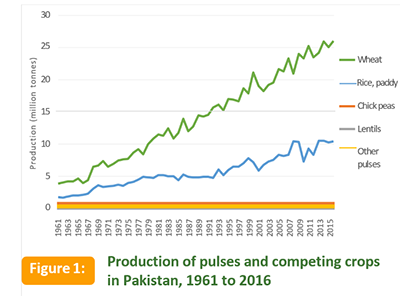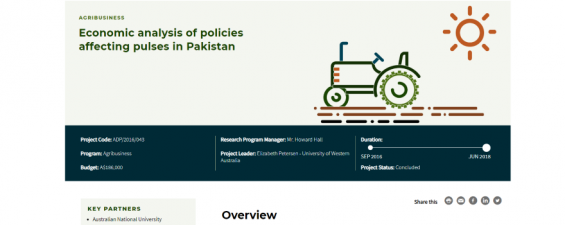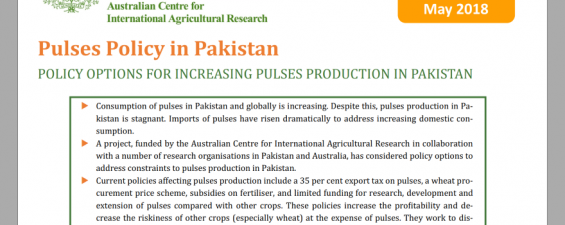The stagnation of pulses production in Pakistan over the last 50 years is a major concern for the Government of Pakistan. Research is underway into agronomic factors contributing to this problem. However, it is vital to also understand the economic and policy factors constraining the sector’s growth. This requires broad-ranging, evidence-based economic analysis to inform policy-makers on reforms that could reduce barriers to pulses production and trade.
 Legacy research
Legacy research
Economic analysis of policies affecting pulses in Pakistan (ADP/2016/043)
The overarching aim of this two-year Small Research Activity project was to provide evidence-based economic analysis and advice to policy-makers on policy reform to reduce constraints to pulses production and trade and increase productivity in Pakistan.
To achieve this overarching aim, four objectives were defined as follows:
- Review current policies and programs that affect pulses production and trade in Pakistan.
- Identify the constraints and barriers to pulses production, consumption and trade.
- Analyse the impact of Government policies on pulses prices, production and trade.
- Provide advice to Pakistani policy-makers on policy reform to increase pulses productivity and trade
Methodologies included desktop reviews, a farm survey, farm-level analysis and partial equilibrium analysis and modelling. These produced valuable papers covering many different facets of the pulses sector. Presenting this information at project workshops and other consultation meetings enabled government, commercial and academic stakeholders to consider the “big picture” and provide input.
This process led to further engagement with 120 participants including senior officials at a round of workshops where the research team’s recommendations were shared and debated in order to address the key question: What is the impact of Government policies and what can the Government do to encourage pulse production in Pakistan?
The information and ideas developed through this project are to be further advanced through the Pulses Value Chain project.




